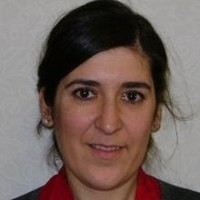Sudden Cardiac Death in Athletes
A special issue of Medicina (ISSN 1648-9144). This special issue belongs to the section "Cardiology".
Deadline for manuscript submissions: closed (31 January 2021) | Viewed by 28961
Special Issue Editors
Interests: cardiac arrhythmias; cardiomyopathies; catheter ablation; ventricular arrhythmias; endomyocardial biopsy
Interests: cardiac arrhythmias; cardiomyopathies; catheter ablation; ventricular arrhythmias; endomyocardial biopsy
Special Issue Information
Dear Colleagues,
After recent dramatic reports of sports-related sudden cardiac deaths, the sports eligibility assessment of athletes has generated consistent uncertainties and preoccupation. Sudden cardiac death occurs in approximately 1 per 200,000 young athletes per year, usually triggered during competition or practice. It remains a difficult medical challenge to prevent this dramatic event. Most causes relate to congenital or acquired cardiovascular disease, with no symptoms noted before the fatal event. The most frequent causes of sudden cardiac death in this young population are: hypertrophic cardiomyopathy, coronary artery anomalies, myocarditis, arrhythmogenic right ventricular cardiomyopathy, and channelopathies. The prevalence of any single associated condition is low, and the sensitivity and specificity of common screening tests leave much to be desired. The single most important predictor is fainting or near-fainting during exercise caused by ventricular arrhythmias. Some forms of ventricular arrhythmias are common in athletes, and may be considered a feature of the athlete’s heart adaptive phenotype. On the other hand, ventricular arrhythmias may also represent the main clinical clue to a concealed cardiomyopathy, potentially heralding sudden cardiac death during sports activity. Currently, there is no consensus on how far the investigations should go in order to avoid missing important diagnoses in athletes at risk of sudden cardiac death. According to an extensive diagnostic workup, the identification of high-risk athletes raises the question of sport eligibility, the need and type of ICD implant, and the safety of returning to practice in ICD wearers.
The purpose of this Special Issue is to discuss issues associated with sudden cardiac death in athletes, with a focus on diagnostic workup, invasive and non-invasive diagnostic approaches, and finally, therapeutic options that provide a framework for decision making in this difficult scenario.
Prof. Dr. Michela Casella
Prof. Dr. Antonio Dello Russo
Guest Editors
Manuscript Submission Information
Manuscripts should be submitted online at www.mdpi.com by registering and logging in to this website. Once you are registered, click here to go to the submission form. Manuscripts can be submitted until the deadline. All submissions that pass pre-check are peer-reviewed. Accepted papers will be published continuously in the journal (as soon as accepted) and will be listed together on the special issue website. Research articles, review articles as well as short communications are invited. For planned papers, a title and short abstract (about 100 words) can be sent to the Editorial Office for announcement on this website.
Submitted manuscripts should not have been published previously, nor be under consideration for publication elsewhere (except conference proceedings papers). All manuscripts are thoroughly refereed through a single-blind peer-review process. A guide for authors and other relevant information for submission of manuscripts is available on the Instructions for Authors page. Medicina is an international peer-reviewed open access monthly journal published by MDPI.
Please visit the Instructions for Authors page before submitting a manuscript. The Article Processing Charge (APC) for publication in this open access journal is 1800 CHF (Swiss Francs). Submitted papers should be well formatted and use good English. Authors may use MDPI's English editing service prior to publication or during author revisions.
Keywords
- sudden cardiac death
- athletes
- ventricular arrhythmias
- hypertrophic cardiomyopathy
- coronary artery anomalies
- myocarditis
- arrhythmogenic right ventricular cardiomyopathy
- channelopathies
- ICD implant







